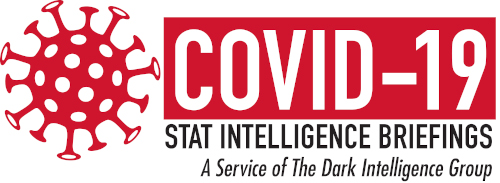New COVID-19 trends offer clinical laboratories new opportunities for 2021
The past year was a year of challenges and obstacles for many clinical laboratories, but the year also provided opportunities for those laboratories that were willing to adapt. Despite the changing environment and difficulties of the COVID-19 pandemic, innovations and adaptions brought success for some clinical labs.
As 2021 begins, there are trends and key moves that clinical laboratories should consider as potential areas of opportunity this year. These trends offer unique chances to develop partnerships or services that may be beneficial in the months and year ahead.
Air Travel-Related Testing
One of the many heavily impacted industries affected by the COVID-19 pandemic has been the airline industry. During the initial lockdowns, air travel volume fell to a fraction of its normal trends, and airlines laid off tens of thousands of staff.
As lockdown restrictions ease, air travel volumes are increasing. Thus, COVID-19 testing has emerged as a need for resuming air travel in greater numbers. In late September 2020, major airlines began offering COVID-19 testing for certain travelers to destinations that require a negative COVID-19 test (See Potential New Demand and Partnership Opportunities for Clinical Laboratories as Airlines Begin Offering COVID-19 Testing to Travelers).
This focus on COVID-19 testing by airlines seems to be a response to recommendations made by the International Air Transport Association (IATA), a key industry player in the airline industry. The number of airlines offering testing—and the scope of their offerings—has continued to grow since IATA’s initial recommendations.
In early October, airports also began offering COVID-19 testing for travelers (See Airports Offer COVID-19 Testing, Opening More Partnership Possibilities for Clinical Laboratories). Unlike airlines, whose initial offerings were destination dependent, airports offered COVID-19 testing for all travelers. Airport testing models differ from typical airline models in that the cost of testing by airlines is typically included in the ticket while airports’ wider offerings require payment by the patient at the point of testing.
Testing by airports has some distinct advantages over testing by airlines. Airlines provide services in multiple locations, making locally centered testing difficult. Airlines also typically only offer testing to those traveling to certain countries or areas where COVID-19 testing is necessary for entry. This creates a situation where part of the air travel market that might want testing is not served. Airports, on the other hand, are centrally located and offer testing to a wider market.
In response to these opportunities, clinical laboratories have begun partnering with local airports to offer testing to travelers. As the air travel-related COVID-19 testing market continues to develop, clinical laboratory leaders should consider seeking similar partnerships. These partnerships should address not only offering testing to air travelers but should also address the problem of falsified test records. Mid-November brought news of the potential problem of fake COVID-19 test results. Travelers struggling to access timely testing appeared to have resorted to underhanded methods to fulfill entry requirements for some countries (See With COVID-19 Testing Needed for Travel, Fake Negative COVID-19 Tests Emerge as a Problem).
Clinical laboratories may find new opportunities in the double offering that is collaborating with airports to offer testing and ensuring that test results are secure and accurate.
Taking Diagnostic Testing to the Next Step
Diagnostic testing has been a cornerstone of the COVID-19 response since clinical laboratories began developing and performing PCR testing in the early days of the pandemic. Now, diagnostic testing is beginning to lose its prevalence with first the entry of rapid, point-of-care antigen tests (See Abbott SARS-CoV-2 Antigen Test Receives EUA, Had $750 Million Deal Pending With Federal Government in Less Than 48 Hours) and, more recently, with the development and commercialization of at-home, over-the-counter tests (See New EUA Makes COVID-19 Testing Available for Patients Without Clinical Laboratories Playing a Role).
As new diagnostic tests begin to marginalize the role of clinical laboratories in performing COVID-19 testing, clinical laboratories that depend on COVID-19 test volumes should consider ways to increase the value of their COVID-19 testing offerings.

PCR testing offers two distinct advantages over other testing methods that clinical laboratories could capitalize on. The first of these advantages is the ability to measure the viral load. In mid-August Frederick (Fritz) Kiechle, MD, PhD, Medical Director at Boca Biolistics and a well-known pathologist, recommended that clinical laboratories consider testing SARS-CoV-2 viral loads in addition to simply testing for the presence or absence of the virus (See Laboratory Expert Identifies Viral Load and Co-infections as Commonly Overlooked Tests for COVID-19 Patients).
A month after Kiechle’s recommendation, a study presented at the European Society of Clinical Microbiology and Infectious Diseases showed that the viral load in COVID-19 patients has decreased over time and that a decrease in viral load seemed to correlate with decreased disease severity (See SARS-CoV-2 Viral Load in Patients Seems to Be Decreasing Over Time New Research Shows). Clinical laboratories may benefit their patients by offering viral load analysis while simultaneously increasing the value of PCR testing at a time when this form of testing is facing new competition.
The second advantage that PCR testing offers addresses a more emerging issue. A recent mutation in SARS-CoV-2 has given rise to a new variant of the virus, B.1.1.7. Research has shown that certain PCR tests may provide indicators of whether SARS-CoV-2 infection includes this variant or not.

In July, STAT COVID-19 spoke with Joel Lefferts, PhD, HCLD, DABCC, Associate Professor of Pathology and Laboratory Medicine at Geisel School of Medicine at Dartmouth. Lefferts indicated that SARS-CoV-2 variants would not likely evade existing PCR tests at the time due to the fact that PCR tests target two or three different sites (See Dartmouth Researcher Discusses the Implications SARS-CoV-2 Mutations will Have on Testing by Clinical Laboratories).
Research by Public Health England has shown that PCR tests that are positive for SARS-CoV-2 genetic materials, but that test and are negative for the gene encoding the spike protein specifically, may indicate the infection is the new variant B.1.1.7. This trait of negativity for one genetic target while positive for another may allow better monitoring of the spread of this new variant (See Contact Tracing Could be Augmented by Tracking Variants of SARS-CoV-2 Says Dartmouth Researcher).
By considering the broader applications of PCR testing and examining the use of testing to monitor the spread of the B.1.1.7 variant and the viral load of COVID-19 positive individuals, clinical laboratories may enhance the value that they can offer when compared to other testing methods.

—By Caleb Williams, Editor, COVID-19 STAT
Related Resource:
Public Health England: Investigation of novel SARS-COV-2 variant: Variant of Concern 202012/01






